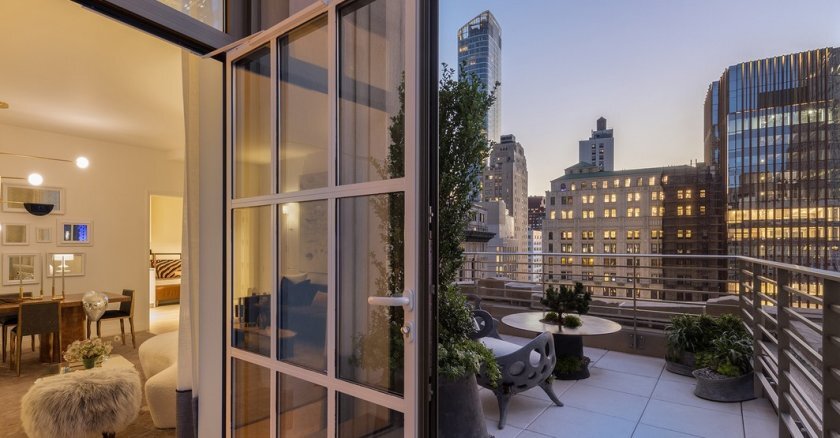In Brief:
Owners of office buildings in downtown Boston can now get a substantial tax break from the city if they convert their buildings to housing, under a new program announced by Mayor Michelle Wu last month.
The program, which waives up to 75 percent of property taxes for up to 29 years, is designed to encourage developers to complete office-to-residential conversion projects immediately. Officials hope it can help address both the increased vacancy of commercial real estate downtown since the onset of the pandemic and the tight supply of housing citywide that’s been driving up costs for years.
“We are seeing a lot of cities wanting to study it,” says Kate Wittels, a partner at HR&A Advisors Inc., a New York-based consultancy group that Boston hired to study the cost and logistics of office-to-residential conversions in the downtown area.
Costly Projects
For Boston, HR&A built a “scenario analysis” tool to help officials understand how developers might view these projects, Wittels says. The key consideration for owners is whether they can expect enough of a financial return from an occupied apartment building that it makes sense to spend the money converting the building from office space. While it can be cheaper to convert an existing building than to build a new one, it’s still immensely costly in many cases. Developers often need investors to finance their projects, and investors want to see certain expected returns before they shell out money.
Promoting a better mix of uses in the office districts has been one of the city’s goals since before the pandemic began, says Devin Quirk, deputy chief of the Boston Planning and Development Agency, which is administering the city’s new incentive program. The city is in talks with a handful of developers about possibly moving ahead with projects, though officials wouldn’t say which developers. Quirk says he’s hoping the tax abatement, available for the next year, is enticing enough to push through deals that might otherwise languish.
“The incentive is time limited. What we’re trying to incentivize is the conversion of these properties now. With interest rates being what they are, offering this incentive now makes it more likely [that conversions will occur],” he says.
Quirk acknowledges conversions are likely to remain a fairly niche product. The program will be successful if it helps push three to five projects through in the next year, he says.
Conversions Relatively Rare
When downtown office buildings were emptying out during the pandemic — perhaps never to be refilled — many planners and advocates saw an opportunity to address housing needs, among the most persistent problems facing cities. There are lots of precedents for converting office buildings, particularly older ones. But in the scheme of overall development, it’s actually quite rare.
According to an analysis by the commercial real estate firm CBRE, only 486 office buildings have been converted to housing nationwide since the year 2000, creating around 47,000 new residential units. That’s only about 1 percent of the overall housing production in that time. While the pandemic has helped make conversions marginally more attractive in some ways — greater office vacancy provides more financial incentive to find an alternative use for a building — it hasn’t changed the underlying economics of those deals. Conversions haven’t substantially increased during the pandemic, CBRE found, despite the “perfect cocktail” of low demand for office space and high demand for multifamily housing.
“In a nutshell, conversion is not going to be the savior for the housing shortage. Neither will it be the savior for record downtown office vacancy rates,” says Christina Tong, an economist at CBRE.
High interest rates are also making it harder to finance development projects. For some office buildings, retrofitting building layouts so they’re suitable for housing — for example, with windows for every unit — requires expensive feats of engineering. Builders may find it particularly challenging to finance those projects right now, says Clint Randall, research director at JLL in Philadelphia.
“I think there’s absolutely an appetite [for conversions], but in the very present moment we’re in it’s just, from an underwriting standpoint, close to impossible,” he says.
What Local Officials Can Do
Philadelphia has had a property tax abatement for decades that can be used to convert buildings, and has been credited with helping to revitalize parts of Center City. Since the pandemic, Washington, D.C., Mayor Muriel Bowser has announced plans to offer a tax break for conversion projects as well. Chicago has taken an especially targeted approach, supporting a handful of conversion projects on LaSalle Street in the loop.
For cities that want to nudge conversion projects along, it helps for officials to do due diligence on the kinds of projects they want to incentivize, says Tong. Streamlining permitting processes for conversions, and assigning specific city employees to work with developers on those projects, can be helpful as well, she says.
More cities are hiring HR&A to study their downtown office markets and the feasibility of conversions, says Wittels, including New York, San Francisco and Atlanta. When structuring incentives, cities need to take into consideration other public policy objectives they have. Boston, for example, has inclusionary affordability requirements that can lower the return for new housing and green building standards that can raise costs. Both are important, Wittels says, but may need to be offset with tax breaks or other incentives if officials want to make conversion projects happen quickly.
“Understanding how rational developers make decisions is important, and thinking through, 'OK, where is the range where I can get a reasonable, positive [net present value]?'” she says.
Office-to-residential conversions may not solve housing affordability challenges or rescue downtowns from runaway vacancy. But every project that does get finished can help make downtowns a bit more vibrant.
“We know single-use districts don’t work for any one,” Wittels says. “Mixed-use districts work better for everyone.”
Related Articles














